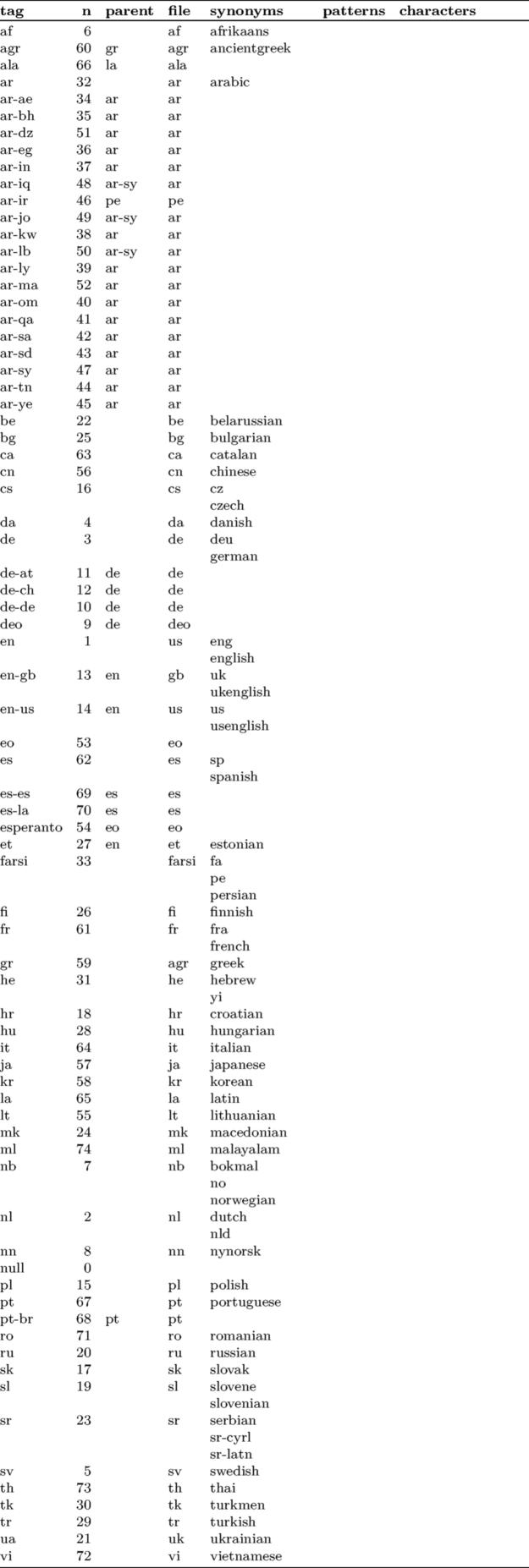Difference between revisions of "Languages"
Jump to navigation
Jump to search
m |
m |
||
| Line 1: | Line 1: | ||
| − | = Two commands to set up language aspects= | + | = Two commands to set up the language aspects= |
Today, with the international use of the UTF-8 standard for input and output encoding, you only need two commands and the '''language tag''' you want in brackets: | Today, with the international use of the UTF-8 standard for input and output encoding, you only need two commands and the '''language tag''' you want in brackets: | ||
* <cmd>mainlanguage</cmd>, to set the language of auto-generated language elements, like the title of the table of contents or the appendix. | * <cmd>mainlanguage</cmd>, to set the language of auto-generated language elements, like the title of the table of contents or the appendix. | ||
| − | * <cmd>language</cmd>, to change the hyphenation rules, quotation marks, all that sort of thing, to that of a different language. (The default language is English.) | + | * <cmd>language</cmd>, to change the hyphenation rules, quotation marks, all that sort of thing, to that of a different language. (The default language is English.) |
=Language tags= | =Language tags= | ||
Revision as of 13:18, 7 June 2020
Two commands to set up the language aspects
Today, with the international use of the UTF-8 standard for input and output encoding, you only need two commands and the language tag you want in brackets:
- \mainlanguage, to set the language of auto-generated language elements, like the title of the table of contents or the appendix.
- \language, to change the hyphenation rules, quotation marks, all that sort of thing, to that of a different language. (The default language is English.)
Language tags
Here's the list of ConTeXt's language tags, also available in the latest official Languages manual (link to the associated sources).
\usemodule[languages-system] \loadinstalledlanguages \showinstalledlanguages

Language specific pages
- Arabic and Hebrew
- Chinese Japanese and Korean
- Czech
- Greek
- Russian
- Vietnamese
- RTL for dealing with Right-To-Left texts as well as BiDi (bidirectional) texts
Finally, for older content, we keep a page Encodings and Regimes - Old Content about including accents, composite characters, and how "ä" and alike were produced in LaTeX/ConTeXt mkii.